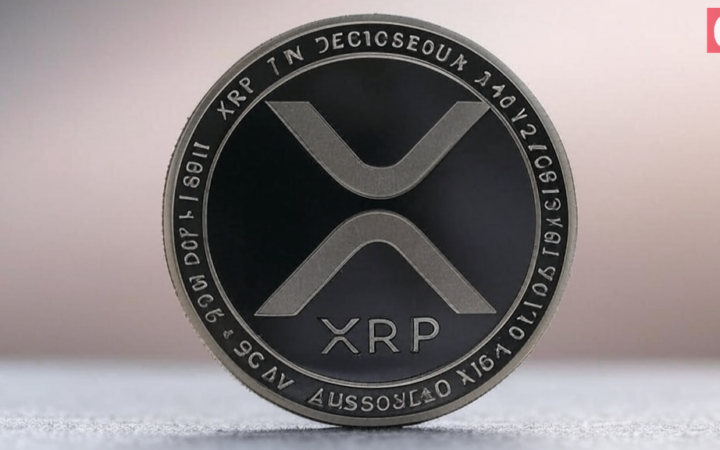
Please check out latest news, expert comments and industry insights from Coinspeaker's contributors.
Through its innovative approach, Mango Network achieves a harmonious balance of asset security and liquidity, establishing a robust technical foundation for developing a comprehensive omnichain transaction infrastructure.
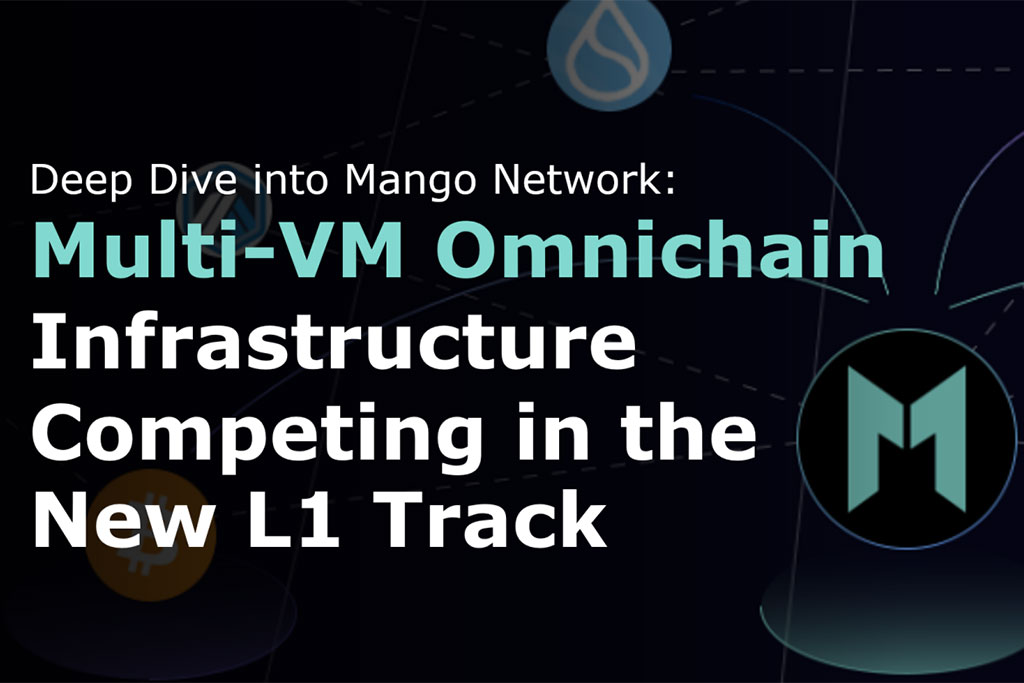
Mango Network, a cutting-edge blockchain infrastructure provider, today announced the official launch of its multi-VM omnichain platform, a breakthrough solution designed to address the blockchain industry’s long-standing challenges of scalability, interoperability, and cross-chain communication. Leveraging a unique combination of OPStack and MoveVM, Mango Network is set to redefine the Layer 1 (L1) landscape by offering seamless multi-VM interoperability, attracting developers and projects from diverse blockchain ecosystems.
Amid the excitement of the Singapore Token2049 event, the blockchain industry is undergoing significant reflection and transformation. While the “thousands of chains” trend has captured the industry’s attention, the growing complexity and diversification of decentralized applications (dApps) have highlighted the urgent need to break down barriers between blockchain ecosystems and enhance cross-chain compatibility. Today, “compatibility” has overtaken “high performance” as the key challenge in developing on-chain ecosystems.
As cross-chain interaction and interoperability become increasingly critical, the multi-VM (Virtual Machine) architecture is emerging as a pivotal technology. Its flexibility and adaptability across various ecosystems position it as a solution to the industry’s pressing challenges. With the rapid expansion of on-chain applications, the multi-VM architecture is taking center stage in the L1 sector, driving innovation and opening up new opportunities in the blockchain ecosystem. This marks a major shift in the industry’s focus–away from just “high performance” towards “comprehensive ecosystem integration”, with the multi-VM architecture at the heart of this transformation.
In this landscape, the multi-VM approach is gaining widespread attention and adoption, thanks to its diverse technical advantages. By supporting multiple virtual machines (such as EVM, MoveVM, and WASM), it provides developers with more tools and flexibility, while significantly lowering development barriers. This inclusivity attracts developers from various technical backgrounds, enhancing scalability and interoperability. Notably, the architecture facilitates interactions between heterogeneous chains, bridging gaps between different blockchains and boosting on-chain liquidity flow.
Multi-VM projects like Mango Network harness the strengths of OPStack and MoveVM to create a cross-chain communication network that supports seamless multi-VM interoperability. This breakthrough not only enhances platform scalability but also fosters interoperability between heterogeneous chains, resolving the persistent issue of fragmented on-chain capital liquidity.
In today’s blockchain landscape, efficient ecosystem integration is vital for the development of cross-chain applications. By supporting multiple smart contract languages and virtual machines, multi-VM projects dismantle the technical barriers that divide different blockchain ecosystems, offering dApps greater flexibility and innovation potential. For large-scale dApps, compatibility is a critical factor in ensuring success. This enhanced compatibility will not only fuel sustainable growth in the blockchain ecosystem but also pave the way for more groundbreaking applications. As the market continues to mature, the multi-VM architecture is poised to play a pivotal role in the competition within the L1 space, becoming a core driving force for the next wave of blockchain technology innovation.
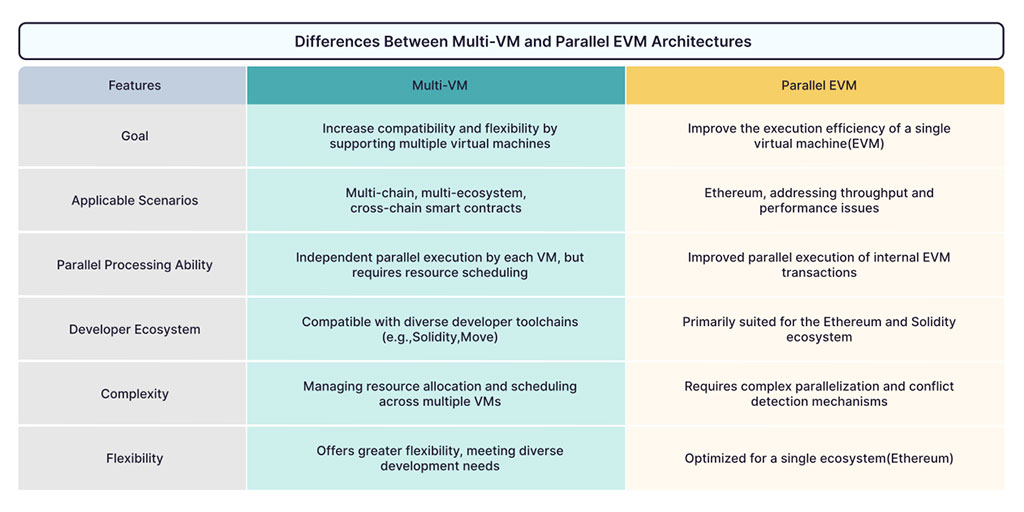
Mango Network’s Layer 1 solution, supported by the Move language, provides developers and users with a secure, modular, and high-performance Web3 infrastructure. It boasts a transaction processing speed of up to 297,450 TPS (transactions per second), showcasing exceptional performance while maintaining high standards of scalability and interoperability.

Mango Network’s Layer 2 solution, OP-Mango, is built on OPStack and provides strong cross-chain communication capabilities, distinguishing it from traditional Layer 2 solutions. Through cross-chain communication contracts, it connects the EVM layer of the Ethereum network with the MoveVM layer of the Mango network. This design allows developers to leverage the advantages of both virtual machines, expanding application scenarios and offering users more comprehensive services. Mango Network combines MoveVM and EVM to achieve cross-chain communication and multi-VM interoperability, driving innovation in blockchain infrastructure.
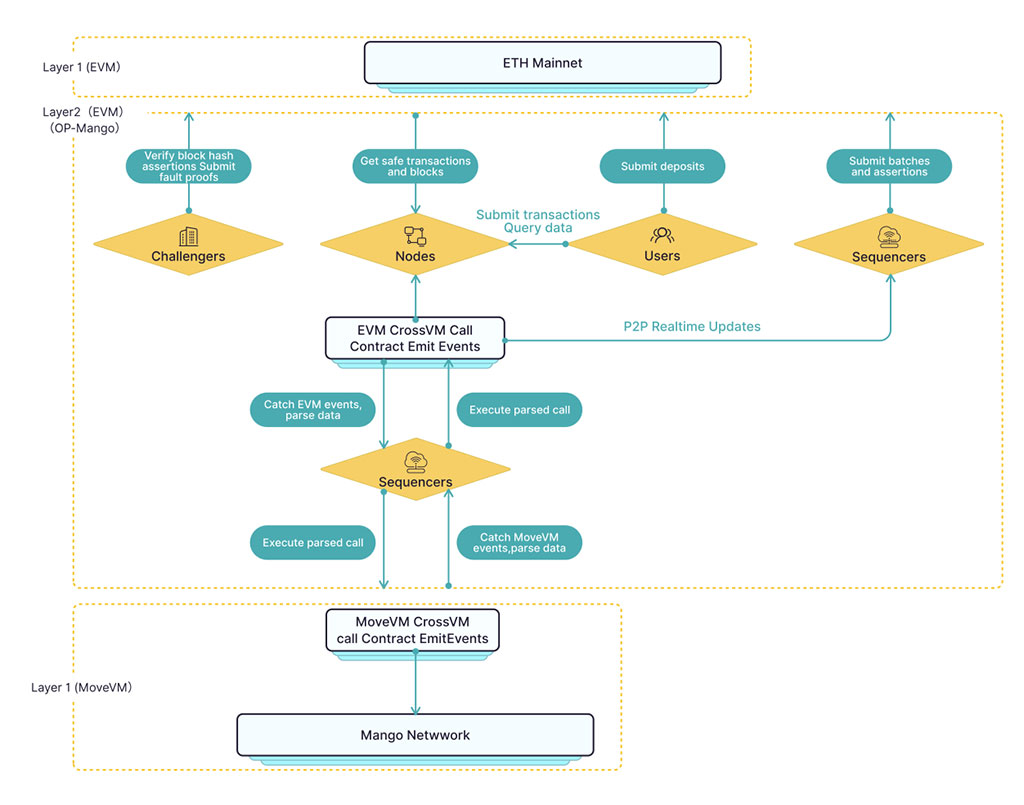
Mango Network handles on-chain transactions and smart contract calls using both the MoveVM and EVM virtual machines. Each VM is responsible for different types of contracts and operations, but they are bridged through cross-chain communication, enabling coordinated omnichian operations.
One of the core challenges in multi-VM infrastructure is facilitating data sharing and contract execution between different virtual machines. Mango Network addresses this by employing the OP-Mango communication protocol to bridge the EVM and MoveVM, enabling seamless cross-VM collaboration and communication.
To improve transaction processing efficiency, OP-Mango adopts a Layer 2 scaling solution that processes a large number of transactions off-chain and periodically submits them to the mainnet for settlement. This architecture is based on the following technical principles:
Cross-chain asset management in Mango Network relies heavily on the interoperability between EVM and MoveVM, ensuring the secure transfer and settlement of assets across chains. The core principles are as follows:
OP-Mango, as a Layer 2 network based on OPStack, utilizes EVM compatibility to handle user transaction requests. Users can submit transactions and query block data through nodes. OP-Mango nodes pull secure transaction data from Ethereum’s Layer 1 network and broadcast it through a peer-to-peer network, ensuring timely network synchronization.
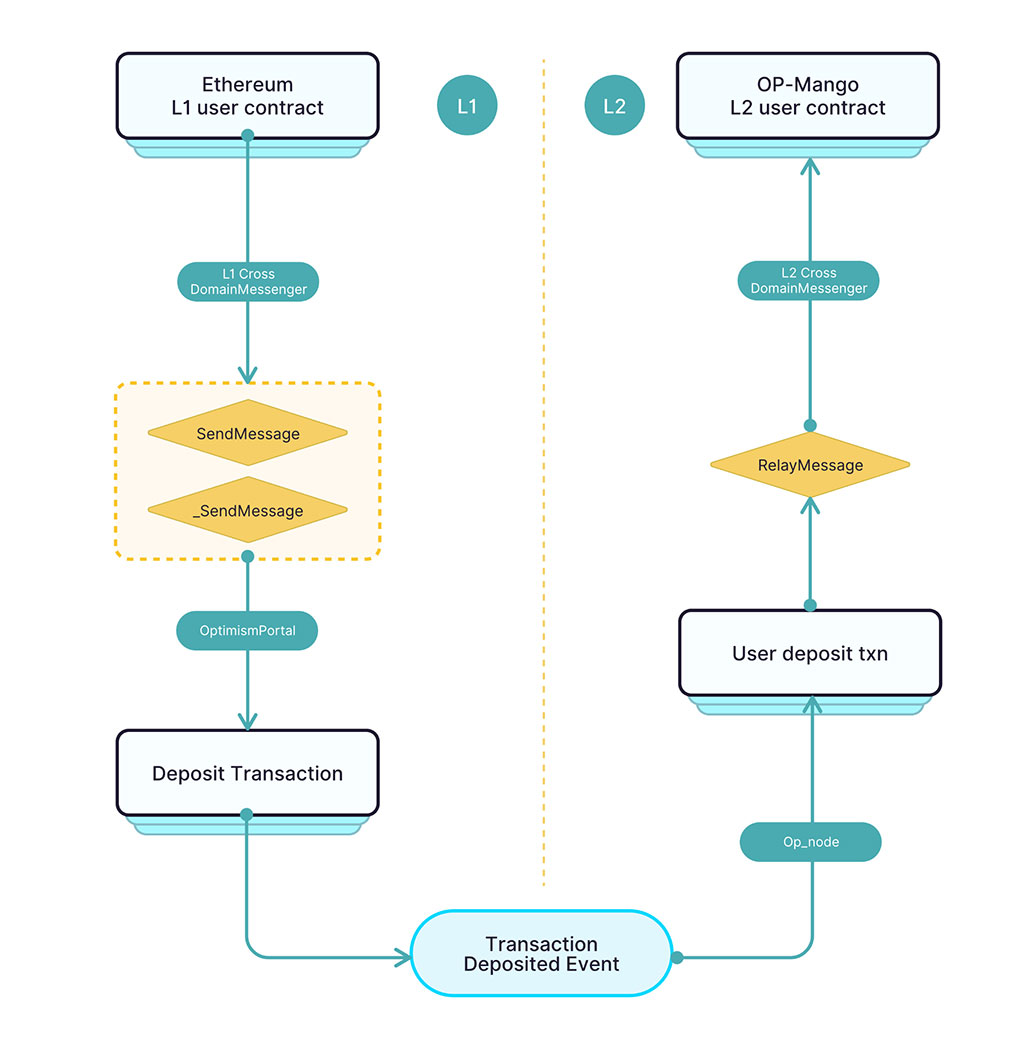
In this process, the sequencer is responsible for ordering, packaging, and submitting batch data for transactions in the Layer 2 network. Specifically, the sequencer sorts transactions received from users and nodes, packages them into batches, and submits them to Ethereum’s Layer 1 network. $MGO, the native token, is used as gas for batch submissions. Simultaneously, the sequencer performs assertion operations, submitting state updates and transaction records in bulk to Layer 1 validators, ensuring that the OP-Mango network’s state remains consistent with Ethereum’s.
The distinguishing feature of OP-Mango is its cross-chain communication contract, which enables close interaction and settlement with the MoveVM in the Mango Network. This design allows the Layer 2 network not only to support EVM but also to interact with MoveVM smart contracts, achieving cross-chain interoperability. In the architecture, the sequencer captures events from either the EVM or MoveVM, translates them into cross-chain calls, and triggers the execution of contracts in the other virtual machine. Through this cross-VM sequencer, OP-Mango enables contract interoperability in different virtual machine environments, achieving secure settlement and data synchronization between the EVM and MoveVM. MoveVM focuses on security and programmability, offering a more flexible contract execution environment that complements the EVM layer. This design allows developers to leverage the strengths of both virtual machines.
Within Mango Network, the security features of MoveVM are fully harnessed. Designed to minimize security vulnerabilities and runtime errors, MoveVM’s static typing checking and modular programming approach enhance safety. Furthermore, the multi-VM architecture brings higher flexibility and scalability to the network, allowing developers to freely deploy and execute smart contracts across different virtual machines, promoting cross-chain communication and asset interoperability.
Mango Network, as the first to integrate MoveVM within a multi-VM execution environment, seamlessly combines MoveVM’s robust asset management security with the scalability of multi-VM systems. This integration not only ensures asset security but also resolves liquidity fragmentation within the Move ecosystem, effectively bridging the gap with the Ethereum Virtual Machine (EVM) ecosystem. Through this innovative approach, Mango Network achieves a harmonious balance of asset security and liquidity, establishing a robust technical foundation for developing a comprehensive omnichain transaction infrastructure.
Disclaimer: Coinspeaker is committed to providing unbiased and transparent reporting. This article aims to deliver accurate and timely information but should not be taken as financial or investment advice. Since market conditions can change rapidly, we encourage you to verify information on your own and consult with a professional before making any decisions based on this content.

Please check out latest news, expert comments and industry insights from Coinspeaker's contributors.




